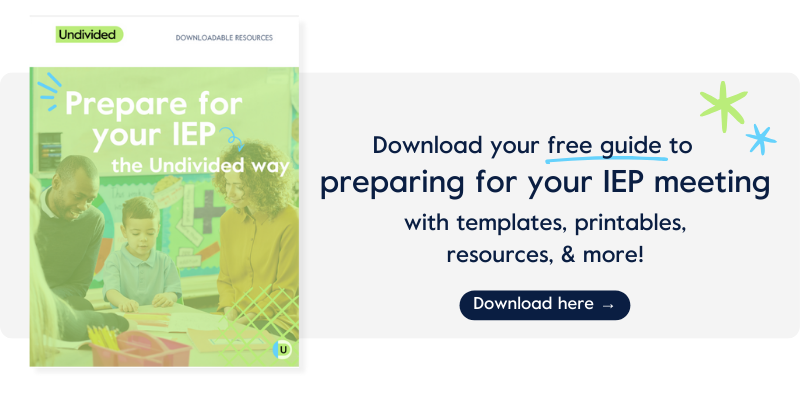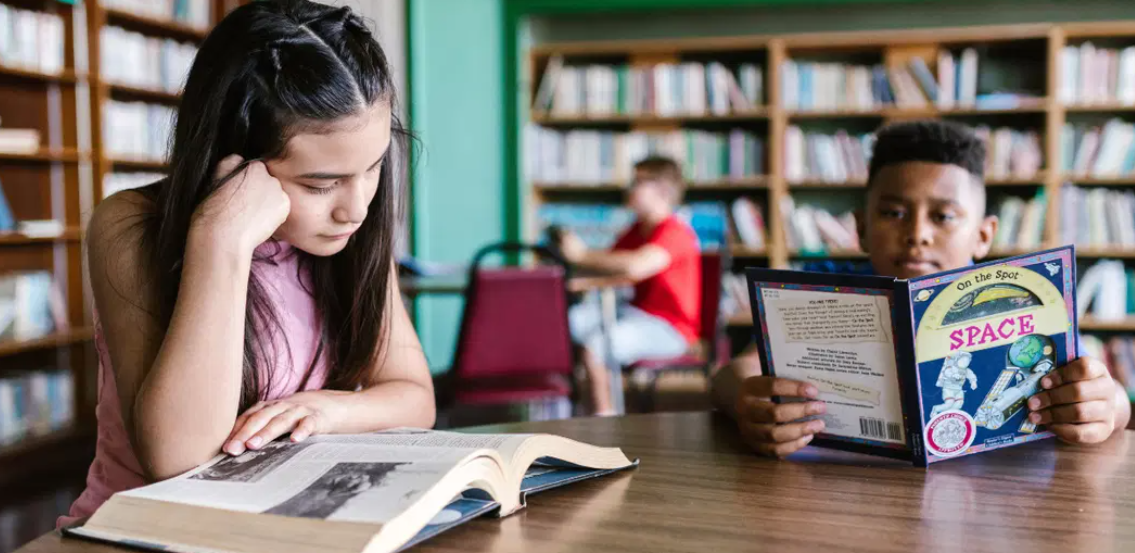
Reading is a basic skill, yet students with disabilities are well behind their peers. In the 2022 National Assessment of Educational Progress (NAEP) report, 74% of fourth grade students with disabilities did not meet the basic standard, compared to 33% of students without Individualized Education Programs (IEPs). And 70% of eighth graders with disabilities were still below basic level compared to 26% of students without disabilities. Across the country, millions of students with IEPs likely have reading goals in their annual plans, yet many still struggle to read at a basic level by the time they reach high school. Below are 5 tips to help you advocate for effective reading instruction in your child’s IEP.
Gain access to Undivided’s comprehensive resources and receive our weekly newsletter.
1. Engage in assessments
Effective reading instruction begins with understanding a student’s unique needs—and assessments are the cornerstone of that process. For students with IEPs, specialized assessments are critical for identifying strengths and pinpointing specific areas of difficulty, while curriculum-based assessments provide regular monitoring to track progress and inform instruction.
Your child’s reading ability will usually be part of your initial assessment for an IEP or your triennial assessment every three years. Your school may also use Curriculum-Based Measurement (CBM) for all children in the school or may use a reading intervention program that includes regular assessments. A useful assessment, especially in your triennial evaluation, won’t just track overall progress but also evaluate specific areas such as phonemic awareness, decoding, fluency, vocabulary, and comprehension in order to identify which skills might need extra attention and support.
2. Advocate for a structured literacy program in your IEP
Schools are often reluctant to promise a specific program in the IEP because that program might depend on a qualified instructor who they cannot guarantee will be available. While parents don’t have the right to demand a specific program, they can advocate in the IEP.
IDEA requires that schools use evidence-based methodology and scientific consensus is that “structured literacy” (also referred to as the science of reading) is the best way to ensure the greatest number of students—including kids with disabilities—are proficient in reading by the time state testing begins in third grade. This approach includes five fundamental pillars: phonics (connecting letters to sounds), phonemic awareness (identifying distinct units of sound), fluency, vocabulary, and comprehension. Structured literacy is often presented as “phonics,” but there is much more to it, such as the Reading Rope.
3. Have reading accommodations written into your IEP
Students who are learning to read while reading to learn need accommodations written into their IEP. Here are some examples:
- Access to text to speech, audiobooks, and read-aloud (when reading is not the learning objective)
- Access to reading materials or course materials at their reading level (this might say “instructional level” or “independent level”) or access to modified text or out-of-grade-level materials
- Access to large-print versions (if needed)
- Access to vocabulary in advance for preteaching
- Accommodations included for state testing if they are within testing range; note that reading accommodations are not allowed for the portions of the test that test reading ability
For more examples of accommodations, check out our List of Accommodations for IEPs and 504s.
4. Communicate with teachers about consistency
Dr. Christopher J. Lemons, an associate professor of special education in the Graduate School of Education at Stanford University notes that consistency is important for students who are receiving reading instruction outside the general education classroom in a pull-out model. He notes that using different reading interventions—for example, flash cards printed in one font in one setting vs. print on a page in a different font—can impact ability to read. If you need help figuring out how to get aligned with teaching staff, check out these tips on communicating with your child’s teacher.
5. Advocate for a structured literacy program in your school
For schoolwide or districtwide curriculum choices, California school districts are allowed to choose preapproved curriculum materials from this 2015 list or show that the package they want is aligned with state standards (in a teacher-involved process). In your school you can advocate on a systemic level for structured literacy to be the norm in all classrooms and for programs to be consistent across all classrooms. You can also speak to your school board when they are adopting new curriculum materials.
The IEP process can be overwhelming and intimidating. If you are unsure of what to ask and when to challenge recommendations, related to reading and more, our free downloadable IEP prep packet will help you prepare for your next IEP meeting and advocate for your child with confidence.
Gain access to Undivided’s comprehensive resources and receive our weekly newsletter.
Join the Undivided Community to get more resources like this in your inbox
100% free | Curated for you

A Navigator is your Partner at each turn
*Currently offering Navigator Kickstarts to residents of California







